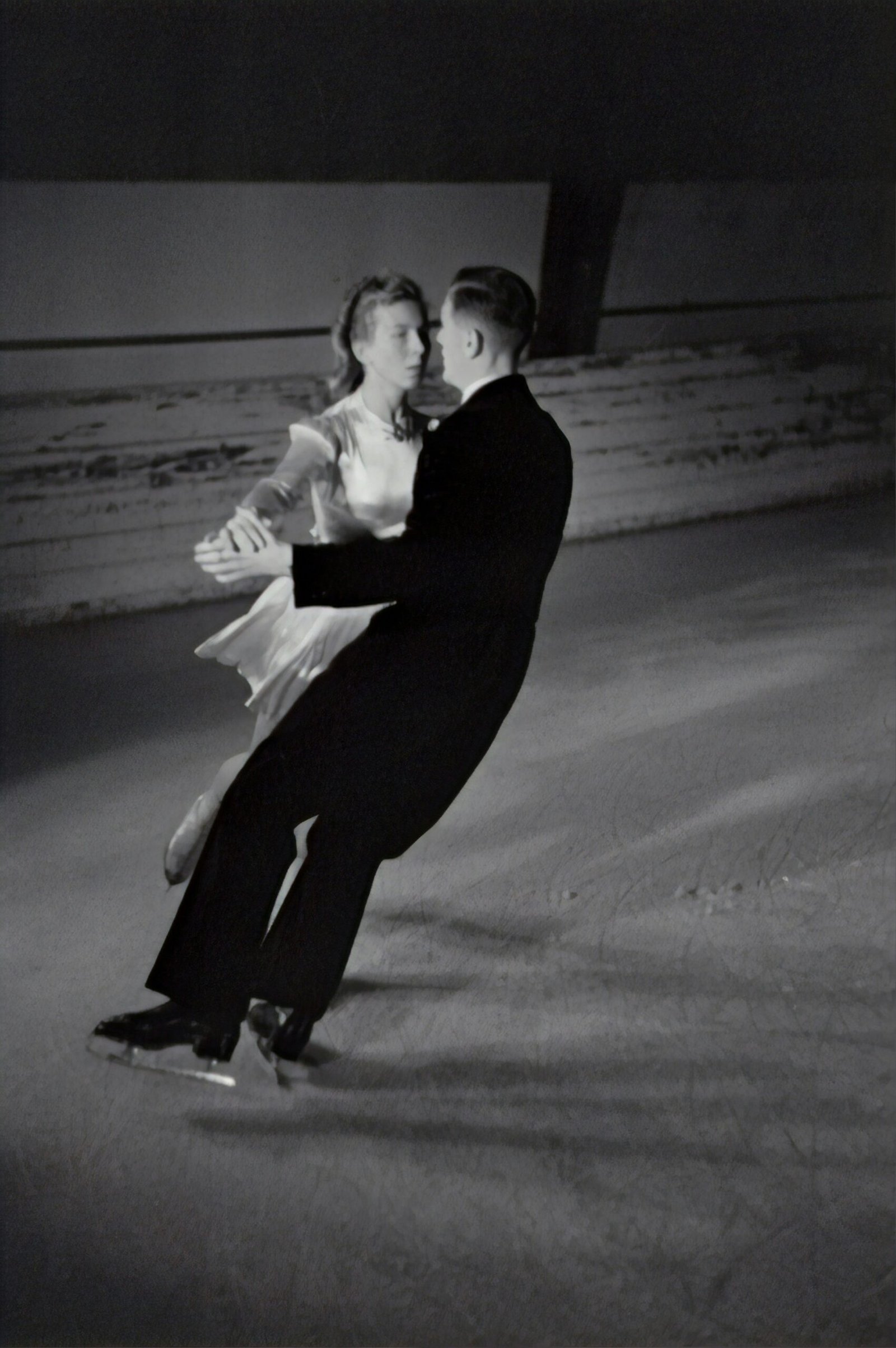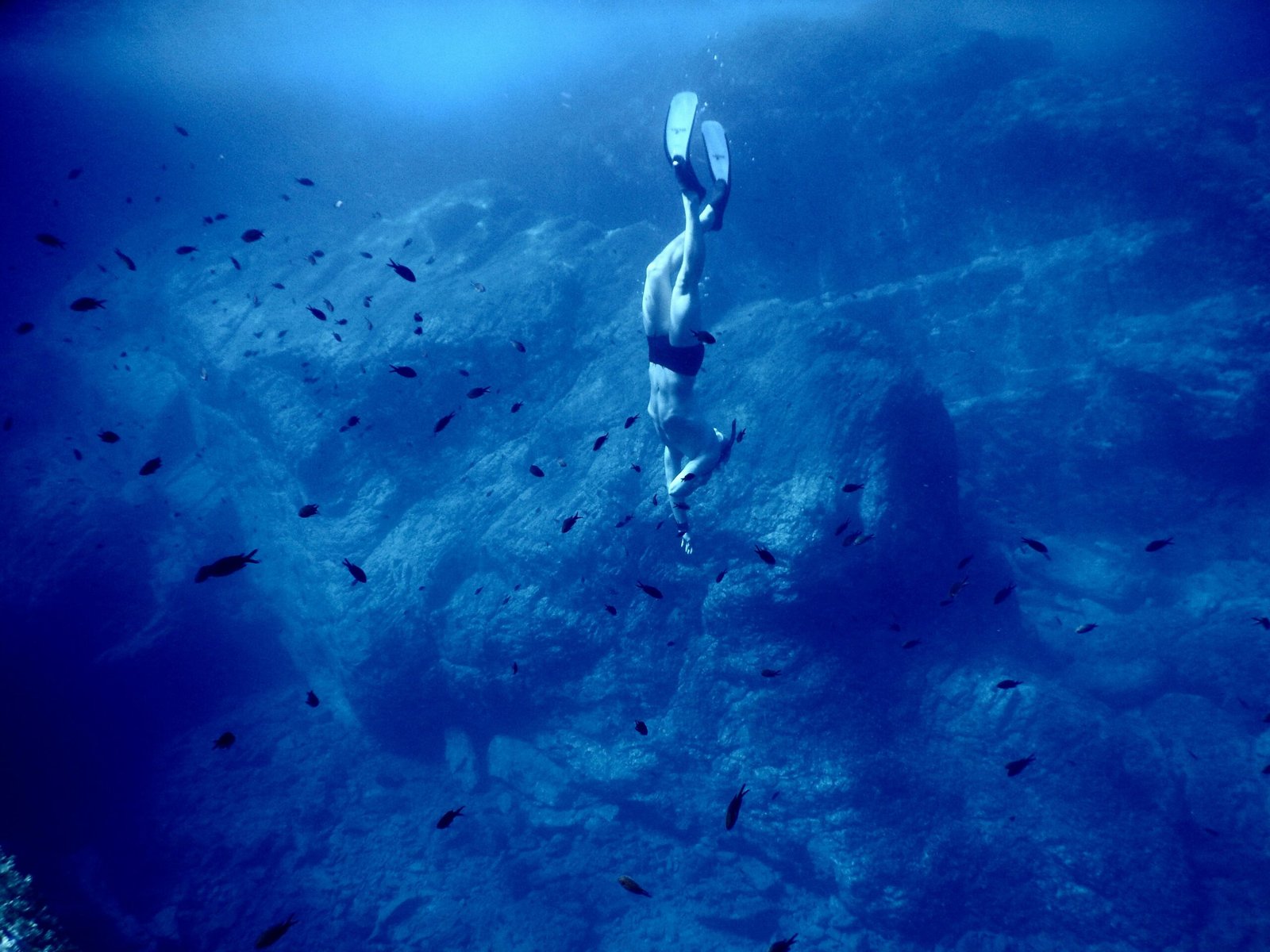Introduction to Ice Skating
Ice skating is a captivating activity that has transcended borders and cultures, providing enjoyment and athleticism to individuals of all ages. Originating centuries ago, it initially served as a practical means of transportation across frozen surfaces. Over time, ice skating has evolved into a popular recreational pastime and a competitive sport, cherished by leisure seekers and professional athletes alike.
The allure of ice skating lies in its ability to combine grace, artistry, and athletic prowess. Whether it is performed leisurely in community rinks or showcased in grand arenas during competitions, ice skating appeals to a wide array of participants. It fosters a sense of camaraderie and competition among those who skate, drawing families and friends to join in on the fun. The sport distinguishes itself with various disciplines, including figure skating, speed skating, and ice hockey, each offering unique challenges and excitement.
As an activity enjoyed year-round, ice skating is particularly prevalent during the colder months when frozen ponds and man-made ice rinks become popular venues. Thousands of individuals take to the ice, donning skates to glide gracefully while engaging in physical exercise. The rhythmic movements and elegance associated with ice skating not only entertain observers but also promote overall fitness and coordination for the participants.
Across the globe, diverse cultures have embraced ice skating, enriching its history and evolution. Each society adds its distinct flavor to the sport, creating an array of styles and traditions. From traditional Scandinavian ballet on ice to the fast-paced action of ice hockey in North America, the universal appeal of ice skating continues to bring people together, fostering connections and shared experiences across generations.
Origins of Ice Skating
The rich history of ice skating dates back to ancient times, with evidence suggesting that its origins can be traced to various cold regions where natural ice formed. Archaeological findings, particularly those from northern Europe, indicate that as early as 3000 B.C., individuals utilized animal bones as a means of gliding across frozen surfaces. These primitive skates were crafted from the long bones of animals, such as cattle, and were affixed to the foot using leather or sinew. The utility of these early skates was twofold: they facilitated transportation across icy landscapes and provided a new form of recreation.
Ice skating was not merely a practical means of travel; it played a significant social and cultural role in early societies. In regions such as Scandinavia and the Netherlands, people often gathered on frozen lakes to skate as a communal activity. Historical texts suggest that this pastime was enjoyed by people of all ages and eventually evolved into organized events that included competitions and displays of skill.
As ice skating spread across continents, its form and function began to diversify. For instance, the Dutch are credited with popularizing recreational ice skating in the 13th century, leading to the development of distinct skating techniques and the first formal ice skating clubs. The tradition of ice skating became ingrained in the social fabric of various cultures, often associated with seasonal festivals and celebrations.
Furthermore, the introduction of metal blades in the 19th century marked a pivotal advancement in the evolution of the sport. These blades allowed for greater speed and maneuverability, giving rise to competitive ice skating and figure skating as we know them today. In essence, ice skating has transitioned from its rudimentary beginnings to a cherished global sport, rooted deeply in the collective history of humankind.
Development Through the Ages
Ice skating has a rich history that dates back thousands of years, with evidence suggesting that it originated in Scandinavia around 3000 BC. Initial forms of skating were not recreational but rather a practical means of transportation across frozen landscapes. Ice skates were made from animal bones, allowing early skaters to glide over ice with greater ease. These rudimentary tools laid the groundwork for the evolution of ice skating.
During the Middle Ages, skating began to spread across Europe, becoming particularly popular in the Netherlands. The Dutch refined the design of ice skates, creating wooden platforms with iron blades that greatly improved glide and stability. This period saw the emergence of the first recorded skating competitions, with notable events held on frozen canals during the winter months. In this era, skating transformed from a utilitarian activity to an increasingly popular leisure pursuit, illustrating a significant cultural shift.
The Renaissance marked another pivotal moment in the history of ice skating. As artistic and intellectual advancements flourished, so too did skating’s popularity among the elite. Ice skating clubs emerged in cities like London, where the upper classes gathered to enjoy the sport. The introduction of what is now known as figure skating occurred during this time, as skaters began to incorporate artistic and acrobatic elements into their routines. The development of specialized blades further facilitated this evolution, allowing for more intricate movements and styles.
By the 19th century, ice skating had diversified into various forms, including speed skating and figure skating, reflecting regional preferences and cultural influences. The sport continued to thrive, gaining formal recognition and leading to the establishment of regulations and competitions. It is evident that the history of ice skating has been marked by continual evolution, shaped by both necessity and innovation throughout the ages.
The Birth of Modern Ice Skating
The evolution of ice skating into a structured sport during the 19th century marked a pivotal moment in its history. Prior to this era, ice skating was largely an informal pastime, primarily practiced on frozen lakes and rivers. However, the advent of new materials and innovations significantly transformed the sport, paving the way for its modernization.
One of the most notable advancements of this period was the introduction of steel blades. Prior to the 19th century, skate blades were primarily made from iron or wood, which limited their effectiveness and performance on ice. The development of lightweight, flexible steel blades allowed for improved agility, speed, and precision, thereby enhancing the overall skating experience. This innovation attracted many enthusiasts to the sport, fueling its growth and appeal among the general public.
Additionally, the establishment of formal skating rinks during this time played a crucial role in the popularization of ice skating. Indoor rinks, specifically designed for the activity, provided a controlled environment free from the uncertainties and hazards associated with natural ice. This created a space for organized skating events and competitions, fostering a sense of community among skaters and encouraging participation in the sport.
Key figures emerged during this transformative period, influencing the development of ice skating standards and regulations. Notable individuals such as Jackson Haines, often referred to as the father of modern figure skating, contributed to the formalization of techniques and artistic expression through choreography and music. The competitive landscape of ice skating began to solidify, leading to the establishment of organizations and formal competitions that further codified the sport.
As the 19th century progressed, ice skating evolved from a leisure activity into a recognized sport, setting the stage for future innovations and the establishment of professional competitions, which continue to thrive today.
Ice Skating as a Competitive Sport
Ice skating has evolved significantly from its humble beginnings as a form of recreation to a widely recognized competitive sport. The transition began in the 19th century, when organized competitions started to take shape, highlighting not only the athleticism of participants but also the artistry involved in performances. Initially, amateur events were held in various regions, leading to the establishment of formal competitions in Europe and North America.
The formation of governing bodies was crucial in regulating and promoting ice skating as a competitive sport. The International Skating Union (ISU), founded in 1892, played a pivotal role in standardizing rules and organizing world championships. This organization has been instrumental in the development of various forms of ice skating, including figure skating, speed skating, and short track speed skating. The ISU established a framework that ensured fair competition, setting the stage for both amateur and professional athletes to participate at an international level.
Over the years, ice skating has garnered increased recognition on the global stage, culminating in its inclusion in the Olympic Games. Figure skating made its Olympic debut during the 1908 Summer Olympics in London, while speed skating followed in 1924 at the first Winter Olympics in Chamonix, France. These events showcased the talents of athletes from around the world, further popularizing the sport. The Olympics not only provided a platform for outstanding performances but also inspired a new generation of skaters to pursue ice skating competitively.
Today, ice skating as a competitive sport continues to grow, with various championships and events featuring both individual and team competitions. The sport has developed a loyal following, and advancements in training and technology have fueled the aspirations of countless athletes. As ice skating continues to evolve, its history as a competitive endeavor remains an integral part of its identity.
Different Styles of Ice Skating
Ice skating has evolved into several distinct styles, each with its unique techniques, rules, and cultural significance. Among these styles, figure skating, speed skating, and ice hockey stand out, representing the diverse applications and artistry associated with this sport.
Figure skating is perhaps the most artistic form of ice skating, characterized by its emphasis on grace, artistry, and technical skills. Competitors perform various maneuvers, including jumps, spins, and footwork sequences, set to music. The sport has its origins in the mid-19th century but gained widespread popularity in the late 20th century. Figure skating competitions are judged based on the beauty of the performances and the technical accuracy of the executed elements. The enduring appeal of figure skating lies in its combination of athleticism and artistic expression, captivating audiences worldwide.
Speed skating, on the other hand, emphasizes speed and endurance. It is known for its long, gliding strides and competitive races on oval tracks. Originating from the Netherlands, speed skating became part of the Winter Olympic Games in 1924. Athletes, clad in aerodynamic suits, race against each other, showcasing remarkable stamina and precision. The thrill of speed skating lies in its race format, where skaters navigate tight corners while striving for the fastest times. Different disciplines within speed skating, such as short track and long track, add further variety to this style.
Ice hockey combines the elements of team competition with ice skating skills, mixing speed, strategy, and physicality. Originating in Canada, this fast-paced game features two teams skating on an ice rink, aiming to score goals by hitting a puck into the opposing team’s net. Ice hockey requires not only proficient skating skills but also teamwork and tactical acumen. The cultural significance of ice hockey is profound, especially in North America, where it has become a quintessential part of many communities.
These diverse styles of ice skating showcase the sport’s rich historical and cultural tapestry, appealing to a wide array of enthusiasts, from art lovers to action sports fans.
Technological Advances in Ice Skating
Ice skating has undergone remarkable transformations since its inception, largely due to technological advancements that have revolutionized the sport. The design of ice skates has evolved significantly, with modern skates made from advanced materials such as carbon fiber, which enhances performance while minimizing weight. These innovations allow skaters to achieve greater speeds and agility on the ice, a testament to how technology has enhanced the physical attributes of the sport.
Historically, skates were made from wood with metal blades, which limited the speed and maneuverability of the skaters. However, contemporary designs now include features such as ergonomic boot shapes, improved blade aerodynamics, and customizable fit options. The integration of materials like titanium and stainless steel in blade construction has further contributed to durability and performance, enabling skaters to execute more complex routines with precision.
Moreover, advancements in ice rink construction have played a vital role in the progression of ice skating. Modern synthetic ice surfaces provide excellent conditions for training year-round, regardless of weather conditions. Furthermore, innovations in refrigeration technology have permitted the creation of smoother and faster ice, enhancing the overall skating experience. The implementation of advanced cooling systems ensures that rinks can maintain optimal ice temperature, which is crucial for competitive skating.
In addition to equipment and surface improvements, technology has also contributed to the evolution of training methods. Coaches and athletes now utilize video analysis and data analytics to refine technique and improve performance. Wearable technology, such as sensors that monitor biomechanics, helps skaters understand their movements in real-time. These advancements in training technology facilitate personalized coaching strategies, allowing athletes to maximize their potential on the ice.
As technology continues to evolve, its influence on ice skating remains profound, shaping not only the equipment used but also the way athletes train, perform, and engage with the sport. These advancements will undoubtedly continue to push the boundaries of what is achievable in ice skating, furthering its rich and fascinating history.
Ice Skating Around the World
Ice skating, an activity rooted deeply in various cultures, manifests itself in diverse forms across the globe. In Finland, traditional ice skating often involves skimming across frozen lakes and rivers, a practice that connects citizens with their stunning natural surroundings. The Finnish people embrace a unique style of “saukkoset,” which translates to “little otter.” This method focuses on gliding on thin ice while maintaining agility, and it reflects a harmonious relationship with Finland’s icy wilderness. Finnish ice skating culture also includes events such as the yearly “Iceland Skating Marathon,” drawing participants who wish to experience this blend of sport and nature.
Moving eastward, Russia presents its own distinct take on ice skating. With a rich history that dates back centuries, ice skating has evolved into both a popular recreational activity and a competitive endeavor. The famed Russian ballet on ice emphasizes artistry in their performances, showcasing extraordinary talent and control. Moreover, traditional Russian winter festivals often feature ice skaters elegantly performing in scenic outdoor rinks, creating a festive atmosphere. Notable competitions, such as the Russian Figure Skating Championships, have played a significant role in promoting the sport, elevating its status on the international stage.
Meanwhile, Canada is renowned for its fondness for ice skating, particularly in the realm of hockey. The pivotal role of ice skating in Canadian culture is highlighted during the annual festivities of Winterlude in Ottawa, where both amateur and professional skaters come together to celebrate their shared passion. Ice skating rinks littered throughout cities and towns across Canada serve as venues for friendly gatherings and competitive events. As the sport evolves, its presence is felt globally, with international competitions such as the Olympic Games and World Figure Skating Championships attracting diverse participants.
This rich tapestry of cultural expressions showcases how ice skating transcends mere sport, weaving itself into the social fabric of nations worldwide.
The Future of Ice Skating
As we look towards the future of ice skating, it becomes evident that both sport and recreational activities in this domain are set to evolve significantly. One prominent trend is the increasing popularity of ice skating as a year-round activity. Advances in technology have made it possible to create synthetic ice surfaces that mimic traditional ice, allowing enthusiasts to skate regardless of the season and climatic conditions. This innovation can lead to greater accessibility and opportunities for training, ensuring individuals can continue to hone their skills even when natural ice is out of reach.
Moreover, with the rise of social media and online platforms, we can expect an increase in emerging talent within the ice skating community. Young skaters can showcase their abilities to a global audience, garnering attention from sponsors and coaches, which in turn fosters a more diverse talent pool. Simultaneously, increased visibility may inspire more participation in ice skating, as individuals from various backgrounds see relatable figures within the sport. As this trend continues, it is likely that ice skating will witness an influx of creativity and new techniques, further enriching the sport.
However, the future landscape of ice skating is not without challenges. Climate change poses a significant threat to natural ice surfaces, particularly in regions where winters are becoming milder. This shift may limit the opportunities for outdoor skating and may require communities to invest more in artificial rinks and ice-making technology. As recreational skaters and competitive athletes adapt to these changes, it will be essential for the global ice skating community to come together, sharing resources and strategies to navigate evolving circumstances.
In conclusion, the future of ice skating holds promise, with innovations in technology, the emergence of new talent, and the need to adapt to environmental challenges shaping its trajectory. The passion for this art form will surely prevail, sustaining its place within both sports and recreational activities for generations to come.



